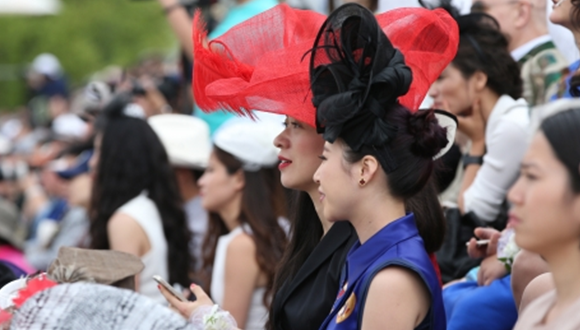Decked out in elegant dresses and eye-catching hats, the 1,000 or so women could have been easily mistaken for an audience at a fashion show.
But they were gathered to watch a top-class equestrian competition, the Longines Global Champions Tour, held in a square in front of the China Art Museum in Shanghai last month, the latest addition to the mainland’s broadening sports culture.
The number of Shanghai residents who take part in equestrian activities is estimated to run only in the low thousands. But that did not deter the municipal government from bidding for the rights to host the show, which is recognised by the International Federation for Equestrian Sports as the leading show-jumping series.
Jiang Lan, general manager of the state-owned sport event organiser Shanghai Juss Event Management Company, said 200,000 foreigners work or study in the city and about seven million visited from overseas every year, so the local government should foster a cultural environment that can serve international residents and visitors.
“This is part of the reason to hold equestrian contests, as we do with other international games, the Formula One and ATP World Tour, for example,” he said.
Xue Jinfan, deputy director of Shanghai Equestrian Sports Administration Centre, a government body supervising sport development in the city, said equestrian activities were gaining in popularity.
The first horse club opened in Shanghai about a decade ago, and the city now has 19, while the number in Beijing exceeds 100.
At first, the facilities were mostly to serve the expatriate population, especially the pupils of international schools. But most members now came from the local communities, according to Xue. As mainlanders’ incomes rose, their interests in sports and culture became more sophisticated, he said.
The clubs in Shanghai are scattered throughout the city’s suburbs, and more than 3,000 young students and hundreds of adults attend regular sessions. There are more than 100 licensed trainers, Xue said.
“Shanghai people are generally open to new things and many people like equestrian sports because it is not only healthy and challenging, but also combines sport and culture,” the official said, noting that a century ago horse racing took place in the downtown of Shanghai.
The Longines tour is also aimed at testing the waters for a wider adoption of equestrian activities. Western horses cannot enter the mainland, due to differences in quarantine standards compared to Europe, Jiang said. That is also why the equestrian competitions of the Beijing Olympics in 2008 were held in Hong Kong.
The Oriental Morning Post has reported the European Commission last year voted to allow a one-month lifting of the restrictions on sending horses to Shanghai after the city’s quarantine authority ensured the hygiene of the area where the horses would be kept.
With the permission, Shanghai became the first mainland city to host a Longines tour last June, About 4,000 seats were available, and 70 per cent of tickets, priced at 1,480 yuan, (HK$1,876) or above were sold. The quarantine ban was temporarily lifted again this year, and about 90 per cent of the tickets were sold.
And mainlanders appear to be taking to the fashion aspect of equestrian activities with ease. In Britain and the United States, key races are important style and social occasions. At last year’s event, many in the audience brought umbrellas to shield them from the sun and dressed casual. But last month, the women took their cues from overseas and turned the day into a celebration of fashion.
“I saw a slew of girls dressed beautifully having their pictures taken by their friends or media in front of a wall of flowers,” Jiang said. “A girl came with her boyfriend and when she saw what other people looked like, she blamed our staff for not telling her the dress code and she immediately left. She felt embarrassed for not dressing appropriately.”
Club owners say it was an uphill battle to attract clients at first, but their persistence is paying off. Wu Qiang, owner of the Shanghai Songseng Equestrian Club, said he opened his club nine years ago believing that “equestrian activities would be hot in Shanghai sooner or later”. He’s still waiting to realise a profit on his 100 million yuan investment, but is encouraged by what he sees.
“I am a little bit relieved that over the past two to three years our member numbers have increased quickly and the market is more mature than before,” he said.
His club has more than 500 members. Two-thirds of the 100-plus horses at the club are breeds from Europe and 30 horses have been bought by riders. Members must pay about 60,000 yuan a year for the care and accommodation of the horse.
Xue said the main challenge to the further development of the field is the limited supply of land in Shanghai.
Takako Yoshikawa, a rider with 20 years of experience, said other impediments to wider acceptance of the activity included the high cost of training and the often remote location of some clubs.
In Beijing, the cost to rent a horse and trainer is about 200 yuan for 45 minutes, but in Shanghai the price is about 300 yuan. Clubs were located far from the city centre and traffic during the weekends was bad, Yoshikawa said.
